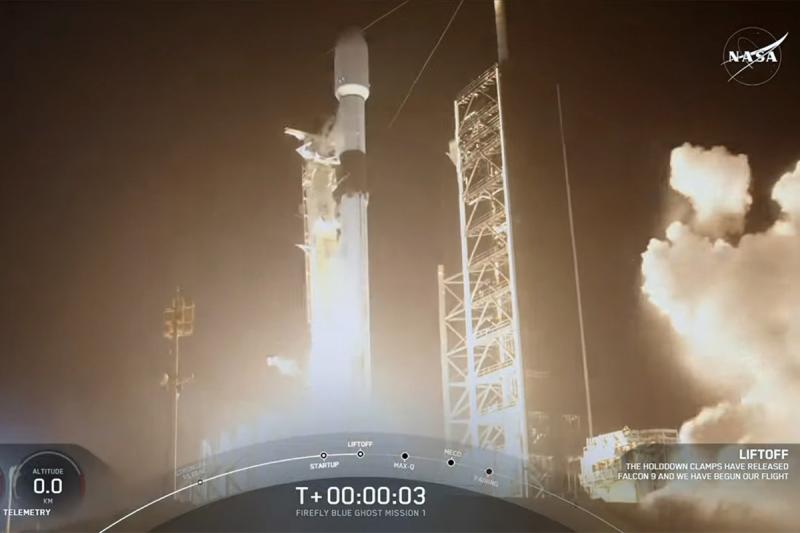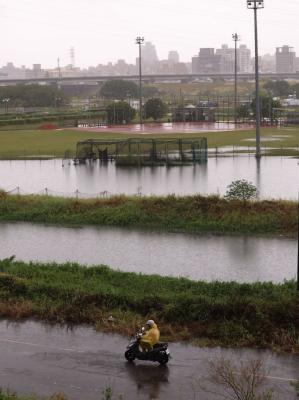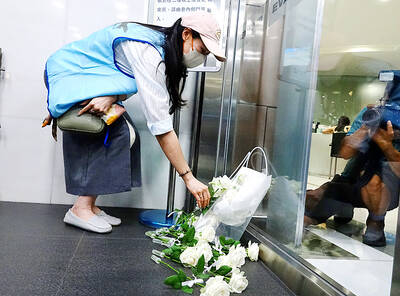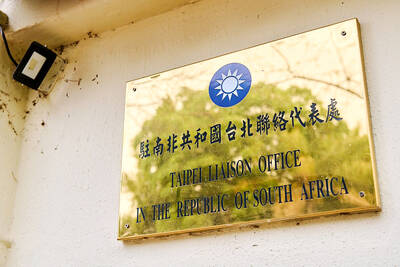Taiwan's National Central University (NCU) announced the successful launch of the country's first lunar mission yesterday, as its Deep Space Radiation Probe (DSRP) was carried into space and is expected to land on the moon in four months.
The DSRP is aboard the lunar lander HAKUTO-R Mission 2 developed by ispace, a Japanese lunar exploration company, and launched from Florida at 2:11pm yesterday via the US space technology company SpaceX's Falcon 9 rocket, NCU said in a statement.
One hour and 32 minutes after takeoff, the lunar lander separated from the launch vehicle.

Photo grab from NASA’s live stream
The DSRP is scheduled to begin operation 36 hours after the launch and NCU's team is set to receive and analyze the data it collects, NCU added.
Featuring the emblem of NCU and the words "Made in Taiwan" on its lower-left corner, the DSRP was Taiwan's first domestically-built scientific payload for a lunar mission and the first to leave low Earth orbit (LEO), which extends to an altitude of 2,000 km, NCU noted.
The DSRP, independently developed by faculty and students of NCU's Department of Space Science and Engineering, weighs only 399 grams but is capable of withstanding stress 33 times its weight and operating under radiation doses exceeding 10 kRads, said Loren Chang (張起維), chair of the department that is leading the lunar mission.
"This project kicked off in 2022 and we went through five different revisions before we got to the version that we felt comfortable watching," Chang told CNA in a phone interview.
The rugged design of the DSRP was necessary as the probe would be traveling to deep space — defined by Chang's team as regions outside of LEO — where the earth's magnetic shield is much weaker, exposing the probe to harsher radiation conditions that could affect technological products, he said.
Additionally, landing on the moon may involve "strong shocks," which would require a robust structure, Chang added.
The mission is aimed at measuring the expected radiation dose between the earth and the moon, as well as on the lunar surface, and understanding the radiation-caused anomalies of electronics commonly used on board a spacecraft, he said.
"By understanding the radiation dose, we can better prepare for missions to the moon and to deep space with human beings," he added.
Asked how he and his team felt after the successful launch, Chang said that they were all "very relieved" as the launch occurred with no delays or cancellations, which are common.
There were several critical stages during a launch, including reaching maximum dynamic pressure and the separation of the spacecraft from the launch vehicle, he said.
"These all went off without a hitch, so we're very, very relieved," he said.
After the successful launch, the lunar lander, carrying the DSRP, is to take a low-energy trajectory to gradually approach the moon, requiring around four months to cover the approximately 400,000km between the earth and the moon, he said.

Taipei, New Taipei City, Keelung and Taoyuan would issue a decision at 8pm on whether to cancel work and school tomorrow due to forecasted heavy rain, Keelung Mayor Hsieh Kuo-liang (謝國樑) said today. Hsieh told reporters that absent some pressing reason, the four northern cities would announce the decision jointly at 8pm. Keelung is expected to receive between 300mm and 490mm of rain in the period from 2pm today through 2pm tomorrow, Central Weather Administration data showed. Keelung City Government regulations stipulate that school and work can be canceled if rain totals in mountainous or low-elevation areas are forecast to exceed 350mm in

EVA Airways president Sun Chia-ming (孫嘉明) and other senior executives yesterday bowed in apology over the death of a flight attendant, saying the company has begun improving its health-reporting, review and work coordination mechanisms. “We promise to handle this matter with the utmost responsibility to ensure safer and healthier working conditions for all EVA Air employees,” Sun said. The flight attendant, a woman surnamed Sun (孫), died on Friday last week of undisclosed causes shortly after returning from a work assignment in Milan, Italy, the airline said. Chinese-language media reported that the woman fell ill working on a Taipei-to-Milan flight on Sept. 22

COUNTERMEASURE: Taiwan was to implement controls for 47 tech products bound for South Africa after the latter downgraded and renamed Taipei’s ‘de facto’ offices The Ministry of Foreign Affairs is still reviewing a new agreement proposed by the South African government last month to regulate the status of reciprocal representative offices, Minister of Foreign Affairs Lin Chia-lung (林佳龍) said yesterday. Asked about the latest developments in a year-long controversy over Taiwan’s de facto representative office in South Africa, Lin during a legislative session said that the ministry was consulting with legal experts on the proposed new agreement. While the new proposal offers Taiwan greater flexibility, the ministry does not find it acceptable, Lin said without elaborating. The ministry is still open to resuming retaliatory measures against South

1.4nm WAFERS: While TSMC is gearing up to expand its overseas production, it would also continue to invest in Taiwan, company chairman and CEO C.C. Wei said Taiwan Semiconductor Manufacturing Co (TSMC) has applied for permission to construct a new plant in the Central Taiwan Science Park (中部科學園區), which it would use for the production of new high-speed wafers, the National Science and Technology Council said yesterday. The council, which supervises three major science parks in Taiwan, confirmed that the Central Taiwan Science Park Bureau had received an application on Friday from TSMC, the world’s largest contract chipmaker, to commence work on the new A14 fab. A14 technology, a 1.4 nanometer (nm) process, is designed to drive artificial intelligence transformation by enabling faster computing and greater power